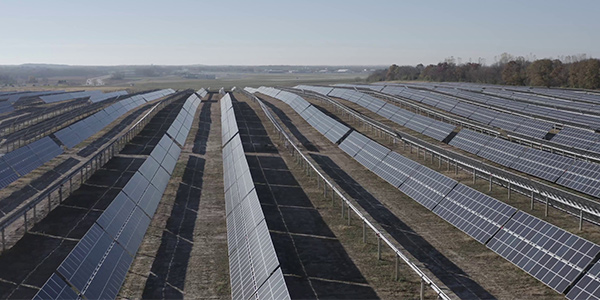Distributed energy resources will function most smoothly in MISO’s markets if aggregations are limited to a single pricing node, RTO officials said Monday.
That detail was the first design element MISO revealed about its effort to comply with FERC Order 2222, which requires RTOs to establish rules that allow DERs to participate in organized wholesale markets on an aggregated basis.
The grid operator also reveals that it will probably borrow from existing market definitions to bring DER aggregations into the market fold.
MISO is designing compliance elements as if the July 19 compliance filing date is a hard deadline, although it has requested a nine-month extension of the filing deadline, until April 18, 2022. (See MISO to Seek Extension on Order 2222 Plan.)
Speaking at a March 8 DER task force meeting, Market Design Adviser Bill Peters said MISO is recommending limiting the geographic scope of DER aggregations to a single elemental pricing node.
MISO’s market design groups one or more elemental pricing nodes (representing individual resources) to form commercial pricing nodes. Locational marginal prices are calculated at each commercial pricing node and used in settlements.
Peters said confining a DER aggregation to one pricing node will ease the complexity and costs of implementing Order 2222 and is the best option for maintaining grid reliability. It could also possibly meet FERC’s directive that RTOs allow DER aggregations to extend across as large a geographic area as technically feasible, he said.
MISO also said it will probably rely on a combination of its existing dispatchable intermittent resource and electric storage resource participation models to accommodate DERs.
Peters said MISO’s energy storage definition is useful for DER aggregations because it allows market participants to withdraw and inject energy and gives them the power to decide when to charge and discharge. The dispatchable intermittent resource definition is helpful because it allows market participants to submit forecasts to reflect their resources’ changing capabilities, he said.
The grid operator said it will investigate modifying its dispatchable intermittent resource participation model to accommodate the 0.1 MW minimum size outlined in Order 2222.
MISO is still working through how it will “obtain settlement-quality data” from aggregations to avoid double compensation for the same services across wholesale and retail markets, Managing Assistants General Counsel Michael Kessler said.
RTO principal advisor Bob Merring said market simulations showed that if too many DERs respond to market prices, it could cause large price and power flow swings on the transmission and distribution seams.
“There’s a price chasing aspect that could cause flow oscillations,” Merring said. “It can be quite challenging to manage market flows in an efficient manner when we have these oscillations.”
Merring said MISO prefers broad aggregations, but only if they’re well-mapped and cost-effective. He said the RTO must get a better idea of the locational transmission impacts of large aggregations so it can manage transmission constraints. Without accurate knowledge of those impacts, limiting aggregation to a single elemental pricing node is probably necessary.
“The trick is making sure we know where they are when they respond,” he said. “That’s the tricky part.”
MISO asked stakeholders to submit their opinions on the Order 2222 compliance effort by March 22.



